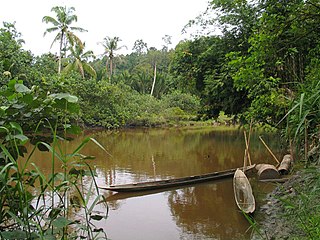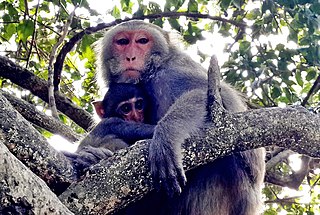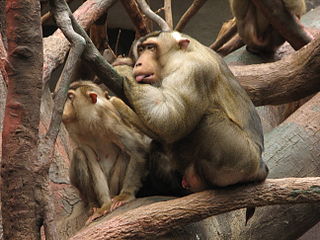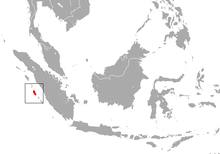
The macaques constitute a genus (Macaca) of gregarious Old World monkeys of the subfamily Cercopithecinae. The 23 species of macaques inhabit ranges throughout Asia, North Africa, and Europe. Macaques are principally frugivorous, although their diet also includes seeds, leaves, flowers, and tree bark. Some species such as the long-tailed macaque will supplement their diets with small amounts of meat from shellfish, insects, and small mammals. On average, a southern pig-tailed macaque in Malaysia eats about 70 large rats each year. All macaque social groups are arranged around dominant matriarchs.

The crab-eating macaque, also known as the long-tailed macaque and referred to as the cynomolgus monkey in laboratories, is a cercopithecine primate native to Southeast Asia. A species of macaque, the crab-eating macaque has a long history alongside humans. The species has been alternately seen as an agricultural pest, a sacred animal, and, more recently, the subject of medical experiments.

The Mentawai Islands Regency are a regency of West Sumatra Province which consists of a chain of about a hundred islands and islets approximately 150 kilometres off the western coast of Sumatra in Indonesia. They cover a land area of 6,033.76 km2 and had a population of 76,173 at the 2010 Census and 87,623 at the 2020 Census; the official estimate as at mid 2022 was 89,401 - comprising 46,431 males and 42,970 females. Siberut at 3,838.25 square kilometres is the largest of the islands. The other major islands are Sipura, North Pagai, and South Pagai. The islands lie off the Sumatran coast, across the Mentawai Strait. The indigenous inhabitants of the islands are known as the Mentawai people. The Mentawai Islands have become a noted destination for surfing, with over 40 boats offering surf charters to international guests.

The Celebes crested macaque, also known as the crested black macaque, Sulawesi crested macaque, or the black ape, is an Old World monkey that lives in the Tangkoko reserve in the north-eastern tip of the Indonesian island of Sulawesi (Celebes), as well as on smaller neighbouring islands.

The Arunachal macaque is a macaque native to Eastern Himalayas of Bhutan, China and India. It is listed as Endangered on the IUCN Red List.

Siberut is the largest and northernmost of the Mentawai Islands, located 150 kilometres west of Sumatra in the Indian Ocean. It covers an area of 3,838.25 km2 including smaller offshore islands, and had a population of 35,091 at the 2010 Census and 40,220 at the 2020 Census. A part of Indonesia, the island is the most important home for the Mentawai people. The western half of the island was set aside as the Siberut National Park in 1993. Much of the island is covered with rainforest, but is subject to commercial logging.

The pig-tailed langur, monotypic in genus Simias, is a large Old World monkey, endemic to several small islands off the coast of Sumatra in Indonesia. Its face is black, its fur is black-brown and it has a relatively short tail. It is a diurnal species, feeding in the rainforest canopy on leaves, and to a lesser extent, fruit and berries. Little is known of its natural history, but it is heavily hunted, its populations have been declining rapidly and the International Union for Conservation of Nature has assessed its conservation status as being "critically endangered". It has been included on a list of the World's 25 Most Endangered Primates.

The Mentawai Islands rain forests is a tropical moist broadleaf forest ecoregion in Indonesia. It covers the Mentawai Islands, an archipelago in the Indian Ocean off the west coast of Sumatra. The islands have been separated from Sumatra since the mid-Pleistocene period, and their geographic isolation allowed the evolution of several endemic species, including 17 endemic mammals.

The booted macaque is a macaque of the Sulawesi Island, Indonesia. This Old World monkey is diurnal and spends most of the day in the trees. It is 50–59 cm long plus a tail of 35–40 cm.

The Formosan rock macaque, also known as the Formosan rock monkey or Taiwanese macaque, is a macaque endemic to the island of Taiwan, which has also been introduced to Japan. Besides humans, Formosan rock macaques are the only native primates living in Taiwan. The species was first described by Robert Swinhoe in 1862.

The stump-tailed macaque, also called the bear macaque, is a species of macaque native to South Asia and Southeast Asia. In India, it occurs south of the Brahmaputra River, in the northeastern part of the country. Its range in India extends from Assam and Meghalaya to eastern Arunachal Pradesh, Nagaland, Manipur, Mizoram and Tripura.

The Heck's macaque is a macaque of Sulawesi, Indonesia. This Old World monkey is diurnal.

Siberut National Park comprises 1,905 km2 (47%) of the island of Siberut in the Mentawai Islands of West Sumatra, Indonesia. The whole island including the national park is part of the World Network of Biosphere Reserves.

The Pagai Island macaque, also known as the Pagai macaque or Bokkoi, is an Old World monkey endemic to the Mentawai Islands off the west coast of Sumatra. It is listed as critically endangered on the IUCN Red List due to its ever-shrinking habitat. Macaca pagensis formerly included the overall darker Siberut macaque as a subspecies, but this arrangement is polyphyletic, leading to the two being classified as separate species. Both were formerly considered subspecies of the southern pig-tailed macaque.

The southern pig-tailed macaque, also known as the Sundaland pig-tailed macaque and Sunda pig-tailed macaque, is a medium-sized macaque that lives in southern Thailand, Malaysia, and Indonesia. It is known locally as berok.

The Gorontalo macaque or Dumoga-bone macaque is a species of primate in the family Cercopithecidae. It is endemic to the island of Sulawesi in Indonesia.

The Tonkean black macaque or Tonkean macaque is a species of primate in the family Cercopithecidae. It is endemic to central Sulawesi and the nearby Togian Islands in Indonesia. It is threatened by habitat loss. Widespread mining in central Sulawesi is believed to exacerbating the problems of habitat loss.

The Mentawai langur is a species of primate in the family Cercopithecidae. It is endemic to the Mentawai Islands in Indonesia. Its natural habitat is subtropical or tropical dry forests. The Siberut langur was formerly considered a subspecies of the Mentawai langur.

The Philippine long-tailed macaque is a subspecies of the crab-eating macaque, known in various Philippine languages as matching/matsing or the more general term unggoy ("monkey"). It is endemic to the Philippine forests and woodlands, but especially in the mangrove forests of western central Philippines— particularly in Palawan, the Visayas, and Mindanao. The names M. f. philippinensis and M. f. philippinenesis have also been used, but arise from orthographical error.

The Siberut langur is a species of monkey in the family Cercopithecidae. It was formerly considered a subspecies of the Mentawai langur, Presbytis potenziani but genetic analysis revealed that these are separate species. The Siberut langur is native to the island of Siberut in Indonesia. It is listed as endangered by the IUCN.





















